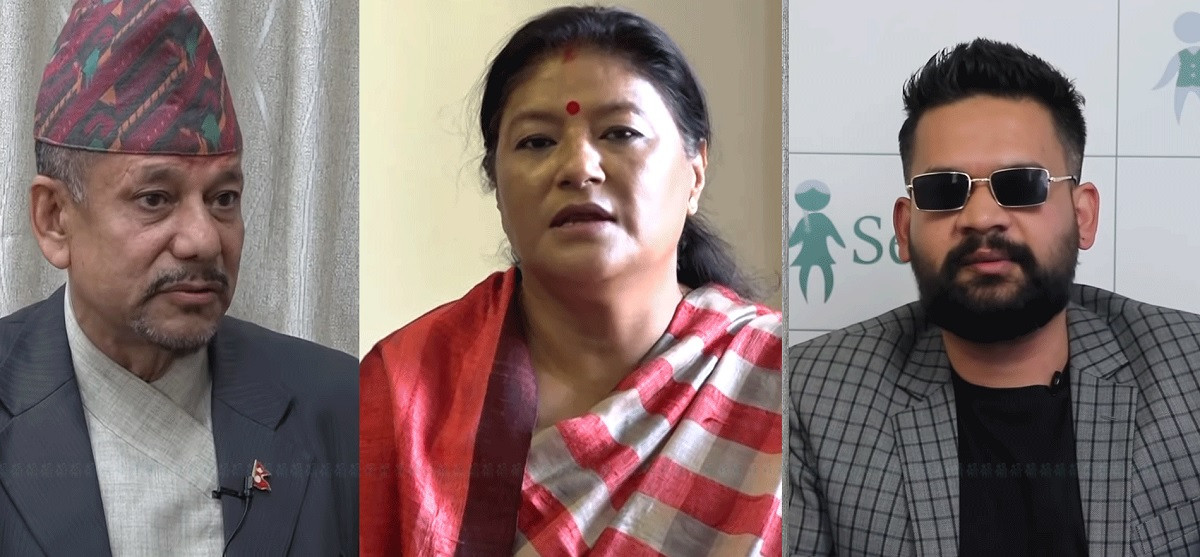“They say I am here to cut (split) votes. Yes, I am here to cut votes of both Congress, UML. I am here to win, got it?” Independent candidate for mayor of Kathmandu Metropolitan City Balen Shah said confidently talking to the media after filing nominations on April 24.
His detractors had been disparagingly predicting that his relevance will be limited to just playing a spoilsport for the two major contenders.
Field reporting in all the wards of Kathmandu over the past week has showed that his confidence is not unfounded and his statement may well prove to be prescient.
Questions were asked as to why Shah was always behind the shades and never took them off to make eye contact with the interviewers and look the people in the eyes to make them believe in what he is saying.
But our field reporting has showed that he and the Kathmandu voters see eye to eye even without him taking off those shades.
Setopati had talked with 200 voters from the core of Kathmandu including Teku, Tripureshwore, Bhotebahal, Ganabahal, Lagan, Brahmatole, Jhochhe, Basantapur, Maru, Bhimsensthan, Yatkha, Indrachowk, Ason, Bangemuda, Naradevi, Chhetrapati, Thamel and other areas at the core of Kathmandu in the first stage of our field reporting in the capital city.
Sixty-two (31 percent) of them said they will vote for Keshav Sthapit of CPN-UML, 51 (25.5 percent) for Sirjana Singh of Nepali Congress (NC) candidate, 36 (18 percent) for the former rapper Shah, 15 (7.5 percent) for RPP's Madan Das Shrestha, 10 (5 percent) for another independent candidate Suman Sayami and two (1 percent) for Samikshya Baskota of Bibeksheel Sajha.
We then reported that Sthapit will struggle to build an unsurmountable lead over Singh from the core of Kathmandu, like current Mayor Bidya Sundar Shakya from his party did in the last local election, that constitutes whole or part of ward numbers 11, 12, 17, 18, 19, 20, 21, 22, 23, 24, 25, 26 and 27 of Kathmandu that have a total of 79,865 voters.
We talked with another 330 voters from the remaining 20 wards at places including Naxal, Handigaun, Balwuatar, Maharajgunj, Lajimpat, Samakhusi, Balaju, Naya Bazar, Sohra Khutte, Swoyambhu, Kalimati, Bafal, Ravi Bhavan, Kalanki, Kuleswhore, Baneshwore, Shantinagar, Koteshwore, Narephant, Bouddha, Mahankal, Kumarigal, Gaurighat, Chabahil, Pashupati area and others in the second stage.
Shah seems to be the first preference for voters in these areas outside the core dominated by the Newars. A whopping 103 (31 percent) of the 330 respondents said that they would vote for him. Sixty-five (20 percent) said they will vote for Sthapit and 51 (15 percent) for Singh.
Twenty-four said they will vote for RPP candidate Shrestha, 16 for another independent candidate Sayami and just one for Bibeksheel Sajha’s Baskota. Fifty-three said that they have yet to decide.
Our sample size of 530 is very small considering that there are 300,000 voters in the city and things can still change from now until the day of voting on Friday.
But Kathmandu's yearning for a change from the traditional two big parties was evident in the last local election with Ranju Darshana of Bibeksheel and Kishore Thapa of Sajha together securing around 43,000 votes (27 percent).
And our field reporting shows Shah can improve even on that combined total and may even win the election.
The main reason for such attraction for him seems to be the electorate’s frustration with the major parties and a large chunk of traditional UML and NC voters said they will vote for Shah this time to change the status quo.
Thirty-eight of the 103 pledging to vote for Shah revealed that they had voted for UML in the last local election while 26 said they had voted for 26. Similarly, 21 said that they had voted for separate Bibkesheel and Sajha candidates while 18 are those voting for the first time.
Most of the respondents complained about the sorry state of affairs inside the capital city and expressed hope that Shah, who is structural engineer by training, will change all that.

